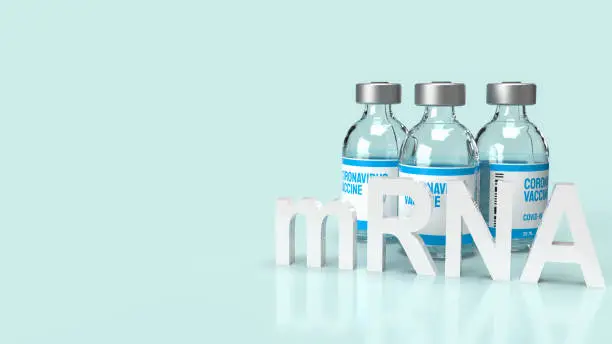Vaccines have worked similarly since they were discovered a long time back: they utilize a debilitated rendition of the designated infection to make a resistant reaction that the body recollects. But the question is how long has mRNA technology been around?
How Long has mRNA technology Been Around?
Since COVID-19 showed up, another sort of vaccine has arisen – – the mRNA antibody. The mRNA vaccination is a one-of-a-kind conveyance framework that centers explicitly on the cells that are the objectives of a disease.
The early long stretches of mRNA research were set apart by a ton of energy for the innovation, however, a few troublesome specialized difficulties took a lot of development to survive.
The greatest test was that mRNA would be taken up by the body and immediately debased before it could convey its message — the RNA transcript — and be added something extra to proteins in the cells.
The answer to this issue came from progress in nanotechnology: the improvement of greasy beads (lipid nanoparticles) that wrapped the mRNA like an air pocket, which permitted passage into the cells.
When inside the cell, the mRNA message could be converted into proteins, similar to the spike protein of SARS-CoV-2, and the insusceptible system would then be prepared to perceive the unfamiliar protein.
Read here : Is mRNA Technology Safe?
How Did mRNA Technology Come into Being?
In 1990, researchers found that they could infuse mice with mRNA and DNA to cause the mouse cells to make a protein. That protein creation went on for half a month.
In 1992, mRNA coding for vasopressin (against diuretic chemical) was infused into rodents, settling their diabetes insipidus side effects.
From these discoveries, it was guessed that a viral or bacterial protein could be made by a living creature’s cells and that the resistant arrangement of the creature would then respond against it.
The main thing holding up traffic was the intrinsic unsteadiness of mRNA. It simply could do without being beyond cells. Try into the cells.
Read here : What is Nicotine Gum?
When inside the cell, the mRNA message could be converted into proteins, similar to the spike protein of SARS-CoV-2, and the insusceptible framework would then be prepared to perceive the unfamiliar protein.
From the 1990s to the 2010s, the race was on to foster a method for conveying mRNA without it becoming unsound.
There were propels being developed of malignant growth antibodies, sensitivity immunizations, and parasite immunizations at that time.
When the Coronavirus Pandemic came, a few organizations were chipping away at mRNA immunizations with generally stable conveyance frameworks.
The additional lift from the earnestness of the pandemic and the public authority subsidizing they got permitted them to lead enormous scope clinical preliminaries at practically the very time that they were tweaking their details.
Read here : What Is IMPERIUM Technology (DNA)?
How this mRNA Technology is Serving Mankind?
mRNA Technology is in the service of mankind since the 20th century in different forms.
- Vaccines
- Regenerative Medicine
- Protein Replacement Therapies
- Genetic Engineering
- Antibody Therapy
Read here : What is Mental Block OR Psychological Blocking?
1- Vaccines
Just from the pandemic of smallpox, mRNA technology is serving and is now in advanced form.
In 2009, scientists led the very first preliminary on disease immunotherapy utilizing mRNA-based immunizations in human subjects with metastatic melanoma.
The consequences of the preliminary showed an expansion in the quantity of vaccination-coordinated T cells against melanoma.
In 2020, the FDA endorsed the principal mRNA-based immunizations against an irresistible sickness SARS-CoV-2. This was just made conceivable by many years of exploration of mRNA-based therapeutics.
2- Regenerative Medicine
Since 2010, mRNA is in the process of providing advanced medicines from the time It was discovered.
mRNA has not exclusively been a subject of interest for vaccine improvement, it has likewise impacted different fields including undeveloped cell science and protein substitution treatments.
IPSCs are a profoundly fascinating expansion to the tool compartment of regenerative medication, as IPSCs can separate into each and every other cell type in the body.
The Japanese researcher Shinya Yamanaka transfected substantial cells by presenting a few record factors and switched them over completely to an early stage immature microorganism state. That is the fantasy of regenerative medication.
Nonetheless, this cycle has the acquired risk of DNA coordination into irregular destinations of the genome and subsequently possibly prompting unfavorable changes, and flighty outcomes. To check this issue.
This technique totally dodges DNA coordination and could be additionally evolved to supplant currently accessible strategies to create IPSCs.
Read here : How To Block Mind-Reading Technology?
3- Protein Replacement Therapies
Since 2015, mRNA therapeutics can be considered as a transient type of quality treatment that sidesteps the complexities of “ordinary” quality treatment where DNA is embedded in the genome, including insertional mutagenesis and poisonousness related to viral vectors.
Right now, specialists are chipping away at presenting mRNA-based protein swap treatments for treating myocardial localized necrosis.
4- Genetic Engineering
Genetic Engineering is an old way of its usage but still wants more attraction. In 2012, groups driven by J. Doudna and E. Charpentier autonomously distributed papers demonstrating the way that the force of CRISPR can be tackled to alter the genome.
As a general rule, the framework is made out of the Cas9 protein and a solitary abandoned guide RNA that are conveyed to the cell by means of a plasmid or viral vector.
It has been observed that vectors are moderately steady and can continue in the cell. Off-target movement of the CRISPR/Cas framework, nonetheless, is part of the way credited to the supported perseverance of plasmid DNA encoding Cas9 in the cells.

mRNA Technology can address this limitation and give further advantages. sgRNA and Cas9 mRNA can be co-conveyed to the cells.
This approach enjoys a few benefits. mRNA, right off the bat, is briefly communicated, which restricts the likelihood of off-target action.
Besides, mRNA is straightforwardly deciphered in the cytoplasm. Interestingly, plasmid DNA needs to cross the atomic envelope to empower the record, as plasmid DNA depends on the host’s record and interpretation hardware to communicate Cas9.
The utilization of mRNA sidesteps this step, coming about in a faster beginning of quality altering.
Thirdly, as guide RNA and Cas9 mRNA are both single-abandoned, they can be exemplified in a solitary nanoparticle, guaranteeing the conveyance of the two parts into the objective cells.
Consequently, the mRNA stage can address the restrictions of quality altering draws near.
5- Antibody Therapy
Since 2014, Antibodies are the fitted particles delivered by resistant cells to battle microorganisms. Antibodies can be infused into an individual’s body as a counteractant for poison or to clear diseases.
Antibodies are made out of four chains: two light chains and two weighty chains. These peptide chains are changed and connected together through disulfide bonds.
Read here : Why Does The Adoption Of New Technology Tend to Increase The Supply?
For neutralizer creation, eukaryotic cells are vital, as prokaryotic cells can’t glycosylate the peptide chains. This creation strategy, notwithstanding, is pricey.
To empower financially savvy articulation, a few specialists have delivered single-chain variable neutralizer sections in E. coli. These pieces saved the fundamental qualities of antibodies. Sadly, their serum half-life is exceptionally short.
Immune response mRNA could be a considerably more reasonable and practical other option. It tends to be changed effectively and moved straightforwardly to the patient’s cells.
The antibodies are then created at the same length as oneself enhancing mRNA is available in the body, giving long haul articulation (as long as about a month and a half) of explicit antibodies










